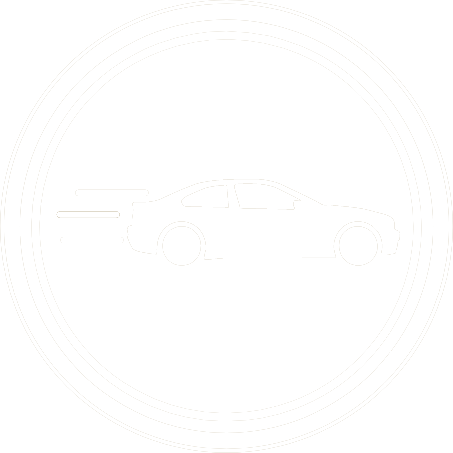Much has been written and said about the Ford Puma, brought into the country to replace the EcoSport that was discontinued on a global basis and, while some were quick to point out the current version of the Puma is already a way into its lifecycle, they perhaps forgot the long history this car has bearing the blue oval.
Originally shown as a concept car at the 1996 Geneva Show and provisionally called the Lynx – designed by Ghia - Ford surprised many by launching the sporty little coupé that was built on the Ford Fiesta platform in 1997 as the Puma; and did so in quite dramatic style.
For the launch the company used what was then cutting-edge cinematography to place Steve McQueen in the car and to recreate the car chase from the iconic movie ‘Bullitt’.
Although Fiesta based, the Puma had a longer wheelbase and several revisions in all operating departments.
Then there was a hiatus and we must shift ahead to 2019 when the Ford Puma re-emerged, still based off the Fiesta, but as a small SUV in line with the changing trends in the global market and, although the headlights still hark back to the Fiesta, it has been significantly updated on a regular basis since then, gaining the latest in engine and onboard technology.

Looking for a fun-to-drive small Ford - check out what we have on offer
The debate as to whether it properly replaces the massively popular Ford EcoSport may still rage on, but the Ford Puma – in Titanium spec for our review – definitely ensures Ford does have a heavy footprint back into this highly competitive segment of the market, even with the heavy price tag of R570 400.
On the price ladder that brings it into play against the likes of the Kia Seltos 1.4T-GDI GT Line (although a new generation is about to be launched), Haval Jolion 1.5 HEV Super Luxury (R579 950), Mazda CX-30 2.0 Individual (R 583 100).
The question then, is does it do the job? The simple answer is yes. . . and no, it will never actually replace the EcoSport but will stealthily gain a loyal following because of its vibrant handling, stylish looks and general usefulness on the road.
The Ford Puma relies on Ford’s B-car architecture, using an optimised wheelbase and track to deliver its SUV proportions and it features a low, sloping roofline for an instantly recognisable silhouette and bucks the trend for wedge-style crossover side profiles having a flatter beltline.
The expressive front-end features ‘canoe-shaped’ headlamps that sit high on the wings, while the LED fog lamps are positioned directly below, integrated into the front air curtain inlets that guide airflow across the front wheels.

Do you need finance for your new Ford? See what we can offer.
The Titanium features black-machined 17-inch alloy wheels and chrome elements for the grille, side skirts and fog lamps. The rear diffuser and skid plate are finished in metallic grey and the window surrounds in high gloss black.
Inside, Puma Titanium is offered with a leather-trimmed steering wheel, wood-effect appliques for the cluster bezel and instrument panel, and distinctive fabric inserts for the door interiors.
One of the more innovative features of the car is the rear stowage that starts with a luggage capacity of 456 litres. A flexible load compartment can comfortably accommodate a box 112 cm long, 97 cm wide and 43 cm high with the second row of seats folded flat.
The optional Ford MegaBox provides a deep, versatile storage space that is capable of comfortably accommodating two golf bags in an upright position.
The storage solution offers a capacity of 80 litres in a space 763 mm wide, 752 mm long and 305 mm deep, which can house unstable items up to approximately 115 cm tall – such as houseplants – in an upright position. Alternatively, with the lid down, the space can be used to conceal dirty sports equipment or muddy boots and, thanks to a synthetic lining and drain plug in the bottom make it easy to clean with water.

Is there a Ford Puma in your future - click here
Up front is the tried and tested 1,0-litre EcoBoost petrol engine that produces 92 kW of power at 6 000 r/min matched to 170 Nm of torque across a broad range from 1 500 r/min to 4 500 r/min.
This engine incorporates Ford’s cylinder deactivation system, which automatically switches off one of the engine’s cylinders when full capacity is not needed, such as when coasting or cruising. The system can disengage or re-engage the cylinder in 14 milliseconds and auto Start-Stop is standard to further reduce running costs.
Power is delivered to the front wheels via a seven-speed dual-clutch automatic transmission, and the driver has access to five Selectable Drive Modes to suit the conditions, comprising Normal for everyday driving, Eco which optimises fuel economy, Slippery for low-traction surfaces, Trail for more challenging terrain, and Sport for moments when the driver wants to exploit the impressive dynamic attributes.
Ford claims 5,3 l/100 km and this is probably achievable if you totally disregard the fact the Ford Puma is a lot of fun to drive, handles exceptionally well (probably why it is M-Sport’s choice for a WRC rally car) and thoroughly enjoys being given the chance to stretch its legs.
Our test average came in in a 6,2 l/100 km, which is still not too shabby and puts in on the mark with the Mazda and Kia Seltos.
What makes it such fun to drive is the stiff twist-beam rear suspension, large-diameter shock absorbers, stiff suspension bushes and optimised suspension top mounts to enhance stiffness throughout the chassis to support vigorous direction changes on twisty roads.
Active safety features include anti-lock braking, Electronic Brake Assist, Electronic Stability Control, Hill Launch Assist, Tyre Pressure Monitoring, Auto High Beam headlight activation and the Lane-Keeping System – which incorporates Road Edge Detection that can recognise where a paved road transitions to an impassable surface, such as a soft verge, gravel hard shoulder, or grass and apply torque to the steering wheel to prevent the vehicle from drifting off the road.
Can you aFford it? Visit our finance calculator
Both variants of the Ford Puma are available with the optional Driver Assistance Pack that adds Adaptive Cruise Control (ACC) with Stop & Go and Lane Cantering, he Blind Spot Information System (BLIS) with Cross Traffic Alert Front parking sensors and a rear wide-angle camera, Active Park Assist with Perpendicular Parking Driver Impairment Monitor, which monitors the driver’s inputs and recognises fatigue or impairment.
Tech-spec includes a wireless charging pad as standard, removing the need to occupy one of the Puma’s two USB inputs with a charging cable and devices can remain connected via Bluetooth to Ford’s SYNC 3 communications and entertainment system while using wireless charging, allowing Ford Puma drivers to control audio, navigation and connected smartphones using simple voice commands.
The system provides embedded satellite navigation and delivers Apple CarPlay and Android Auto compatibility via the USB connection. It is supported by an eight-inch central touchscreen that can be operated using pinch and swipe gestures.
Customers have the option of purchasing service or maintenance plans up to eight years or 135 000 km. The warranty can be extended up to seven years or 200 000 km, while the Roadside Assistance can be extended for an additional one or two years.
The Ford Puma, for me, stood out as glow in the dark of a lot of ‘sameness’ in that particular market segment with both the design and its willingness to get out there and play.
Colin Windell
Proudly CHANGECARS











